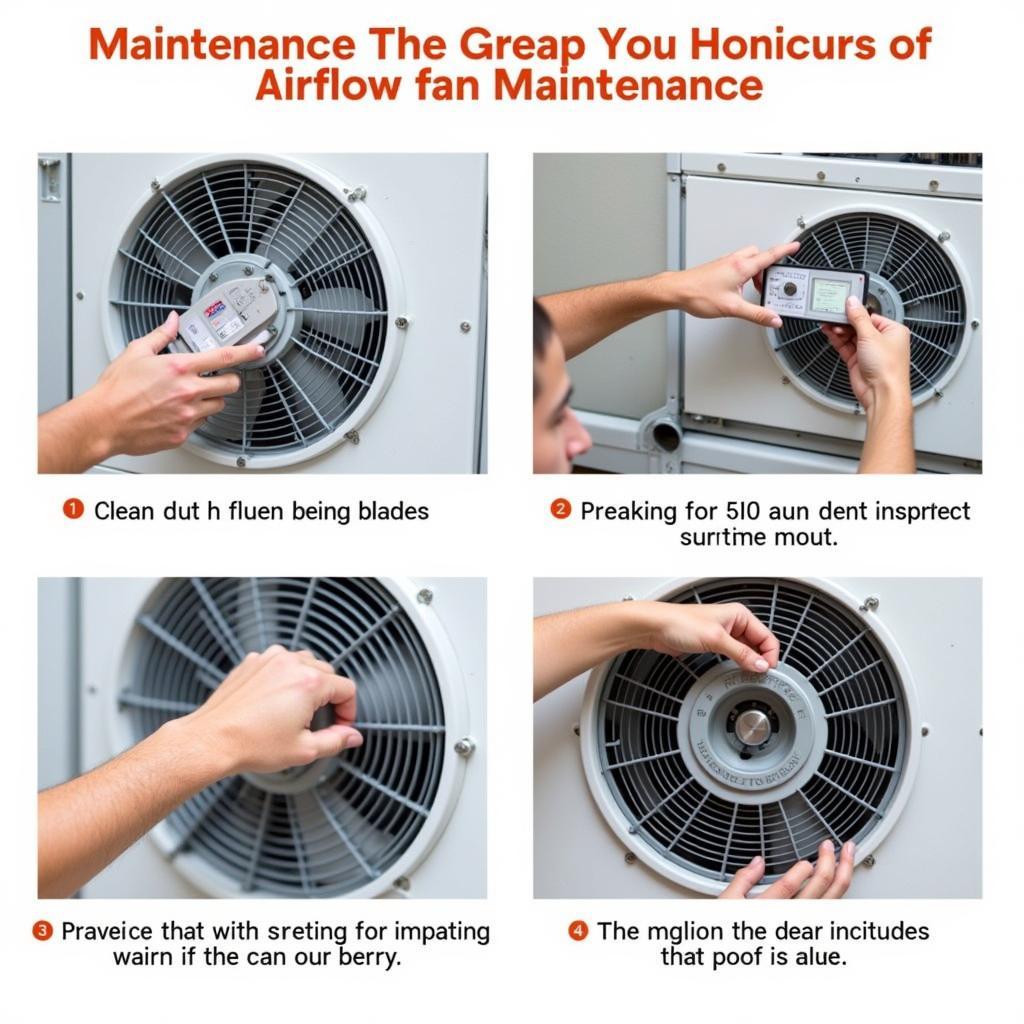Airflow Fans are an essential component of many systems, ensuring optimal temperature regulation and efficient operation. Whether it’s cooling down a computer system or ventilating a large industrial space, understanding the different types and functions of airflow fans is crucial for anyone looking to optimize performance and longevity.
Types of Airflow Fans
There are various types of airflow fans, each designed for specific applications and airflow requirements. Some common types include:
- Axial fans: These fans are known for their high volume airflow and are commonly found in applications like case fans for computers and HVAC systems.
- Centrifugal fans: These fans move air radially, creating higher pressure and making them suitable for applications requiring directed airflow, like in dryers and industrial blowers.
- Crossflow fans: These fans draw air in from the side and expel it in a thin, wide stream, often used in applications like refrigerators and air curtains.
 Types of Axial Fans
Types of Axial Fans
How Airflow Fans Work
The fundamental principle behind airflow fans is the creation of pressure differences. By rotating blades, the fans create a low-pressure zone behind them and a high-pressure zone in front. This pressure difference forces air to move from the high-pressure area to the low-pressure area, effectively creating airflow.
The efficiency of an airflow fan depends on factors such as:
- Blade design: The shape, size, and angle of the blades significantly impact airflow and pressure generated.
- Fan speed: Measured in revolutions per minute (RPM), higher speeds generally result in greater airflow.
- Airflow resistance: Obstacles or constricted spaces can reduce airflow efficiency.
 Airflow Fan Mechanism
Airflow Fan Mechanism
Applications of Airflow Fans
Airflow fans find applications in a wide range of industries and everyday devices, including:
- Computers and electronics: Cooling CPUs, GPUs, and other components to prevent overheating.
- HVAC systems: Circulating air for heating, ventilation, and air conditioning in homes and buildings.
- Industrial processes: Providing ventilation, cooling for machinery, and exhaust for fumes.
- Automotive: Cooling engines, providing air conditioning, and ventilating the cabin.
Choosing the Right Airflow Fan
Selecting the appropriate airflow fan is crucial for optimal performance. Factors to consider include:
- Airflow requirements: Determine the required airflow volume (cubic feet per minute or CFM) for the specific application.
- Static pressure: Consider the resistance to airflow in the system to choose a fan capable of overcoming it.
- Noise level: Different fan designs and speeds produce varying noise levels, important for user comfort.
- Power consumption: Evaluate the fan’s energy efficiency based on its airflow rating and power draw.
Maintaining Airflow Fans
Regular maintenance can significantly extend the lifespan of airflow fans and ensure optimal performance.
- Cleaning: Regularly remove dust and debris from fan blades and surrounding components to prevent airflow restriction and reduce noise.
- Lubrication: Lubricate bearings according to manufacturer recommendations to reduce friction and wear.
- Inspection: Periodically inspect fans for signs of damage or wear, such as worn bearings or damaged blades, and replace them promptly.
 Airflow Fan Maintenance
Airflow Fan Maintenance
Conclusion
Airflow fans are indispensable for a wide range of applications, ensuring efficient cooling, ventilation, and optimal performance. By understanding the different types, functions, and maintenance requirements of airflow fans, users can make informed decisions to maximize their benefits and prolong their lifespan. Choosing the right airflow fan and implementing proper maintenance practices ensures efficient operation, increased longevity, and improved overall system performance.
For specific questions regarding ceiling fan textures or LED fan customizations, you can explore our related articles: ceiling fan texture old and ko thay đổi được chữ trong led fan.
FAQs
What is the difference between CFM and static pressure?
CFM measures the volume of air a fan moves per minute, while static pressure refers to the resistance the fan must overcome to move that air.
How often should I clean my airflow fans?
Cleaning frequency depends on the environment and usage. A general guideline is to clean them every 3-6 months.
Can I replace an airflow fan with a different type?
It’s crucial to use the same type and size of fan as the original. Using a different type can lead to performance issues or damage.
What are signs of a failing airflow fan?
Excessive noise, reduced airflow, overheating, or strange noises from the fan can indicate potential failure.
For insights into K-Pop fan culture and fan mail practices, you can refer to these articles: kpop fan girls are crazy reddit and fan-chun yu mail.
Need further assistance?
Contact us at 0903426737 or email us at fansbongda@gmail.com. Visit us at Tổ 9, Khu 6, Phường Giếng Đáy, Thành Phố Hạ Long, Giếng Đáy, Hạ Long, Quảng Ninh, Việt Nam. Our dedicated customer support team is available 24/7 to assist you. You can also find more information about fan dimensions on our website at fan-x9x3.


